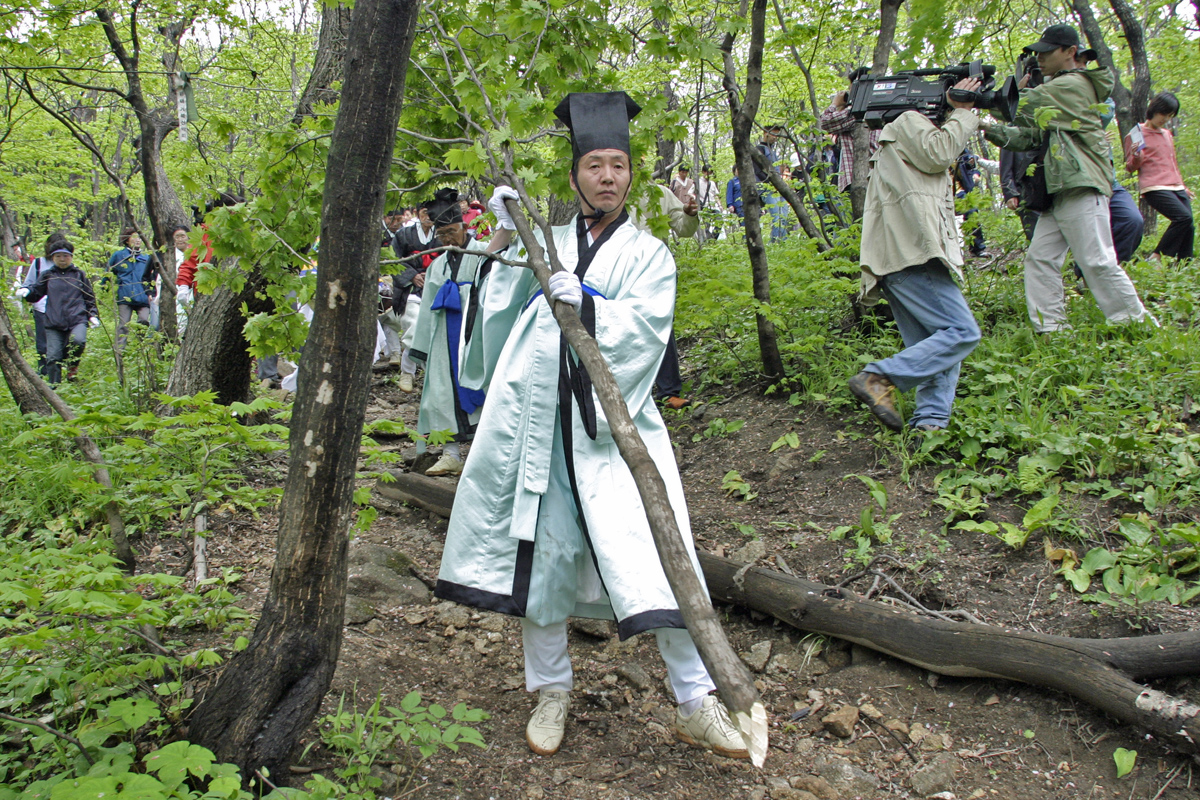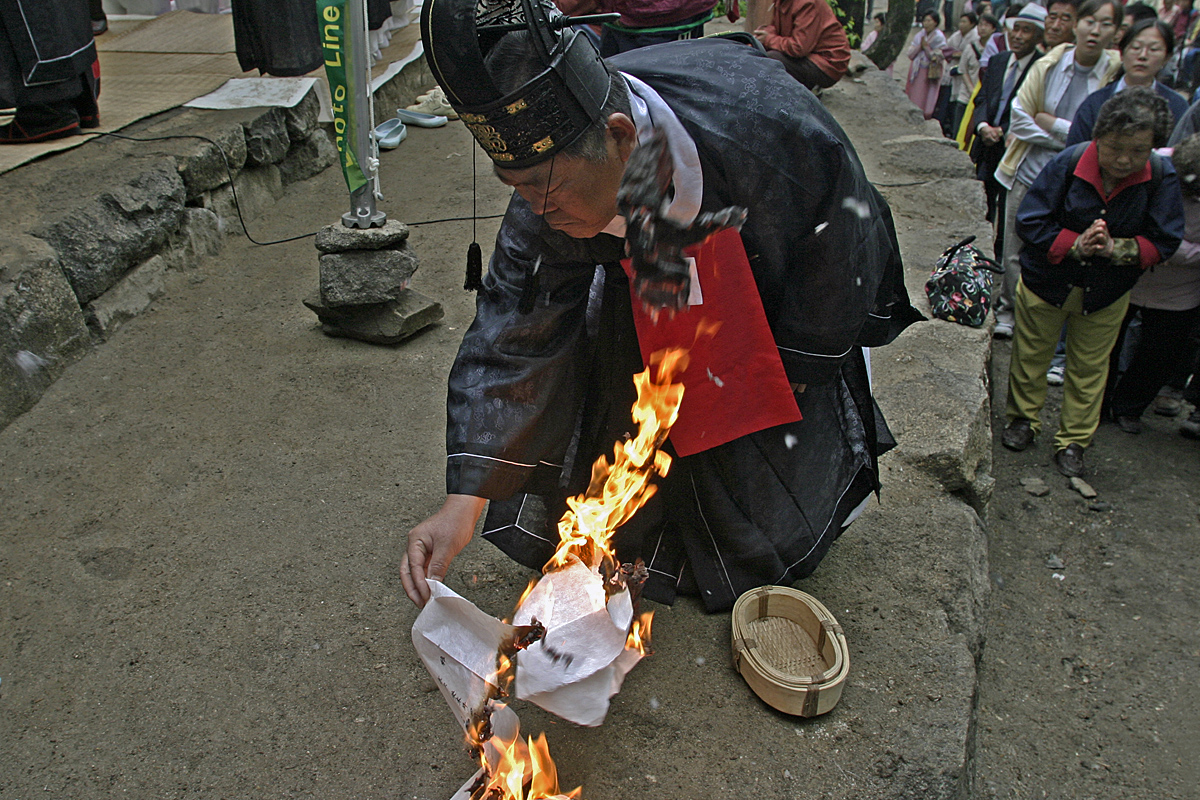Springtime in Odae-san 오대산
Odae-san 오대산 is one of the sacred mountains in Korean Buddhism and Shindo. On May 15, 2003, a spring festival and ritual was held around San-shin-gak 山神閣. The feast consisted of a female shaman selecting a large branch from the spring forest. Cutting down the branch was a man's work. The festival was attended by many television crews who almost knocked each other over. The patch of ground behind the san-shin-gak is a place where sacrifices are made to san-shin 山神 and other gods and spirits.
The spring festival may have been part of a larger Gangneung Dano-je [2] held every year on the fifth day of the fifth month of the monthly calendar. Gangneung Dano-je was described by Heo Gyun [1] in 1603. The people of the village believed that disaster was imminent if sacrifices were not made to the mountain gods.
1 ] https://en.wikipedia.org/wiki/Heo_Gyun
2] https://www.danojefestival.or.kr/






